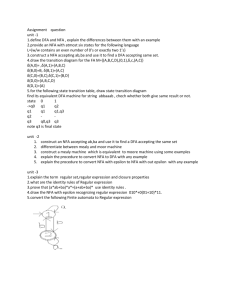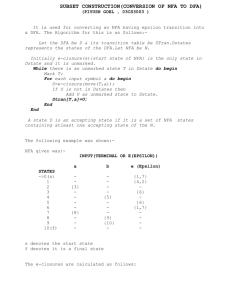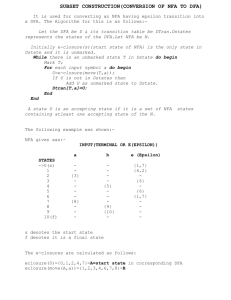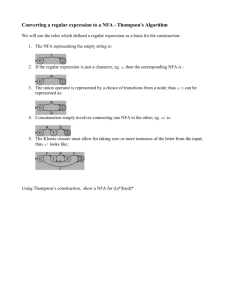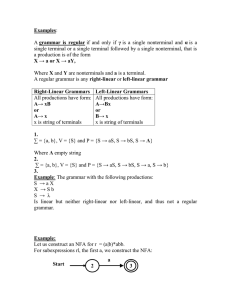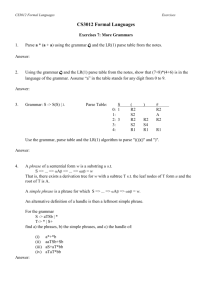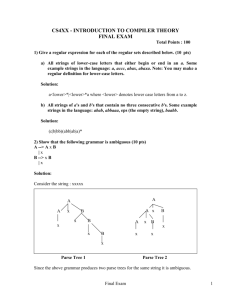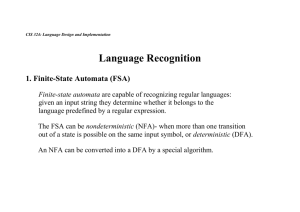Test I
advertisement
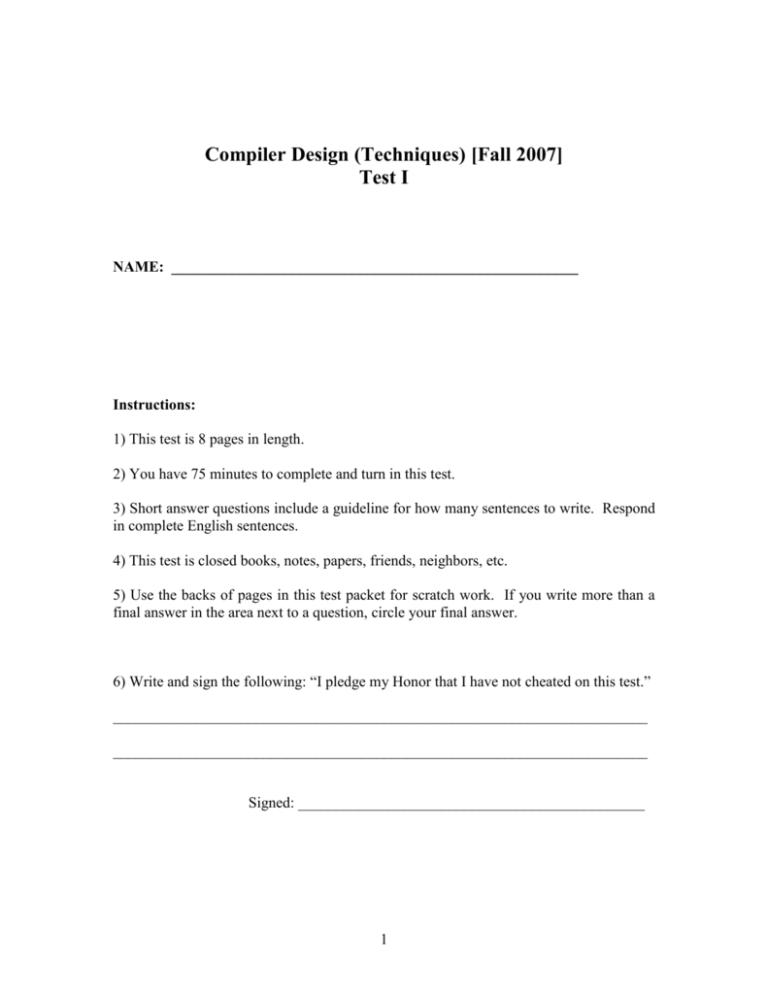
Compiler Design (Techniques) [Fall 2007]
Test I
NAME: ______________________________________________________
Instructions:
1) This test is 8 pages in length.
2) You have 75 minutes to complete and turn in this test.
3) Short answer questions include a guideline for how many sentences to write. Respond
in complete English sentences.
4) This test is closed books, notes, papers, friends, neighbors, etc.
5) Use the backs of pages in this test packet for scratch work. If you write more than a
final answer in the area next to a question, circle your final answer.
6) Write and sign the following: “I pledge my Honor that I have not cheated on this test.”
_______________________________________________________________________
_______________________________________________________________________
Signed: ______________________________________________
1
1. [6 points]
What are the five cases in the recursive definition of regular expressions? In other words,
what are the five primary ways to create a regular expression? [1-3 sentences]
2. [5 points]
What is lex (or flex)? [1-3 sentences]
3. [7 points]
Draw a diagram showing all the major phases of a standard compiler and the result of
each phase.
2
4. [28 points]
Provide a regular expression that exactly matches each of the following. If no such
regular expression exists, briefly explain why. Assume all numbers are allowed to have
leading zeros (e.g., 0011 = 11).
a) All integers written in decimal: ..., -3, -2, -1, -0, 0, 1, 2, 3, ...
(You may abbreviate (0 | 1 | 2 | ... | 9) as [0-9].)
b) Binary numbers that are multiples of 8.
c) Binary numbers in which all the 1s occur before all the 0s.
d) Binary numbers greater than 101.
3
5. [12 points]
Draw an NFA that recognizes exactly the binary numbers matching the following regular
expression: (0 | (1*)) (00 | 11)* (0* | 1)
4
6. [42 points]
Consider the following context-free grammar G.
0
1
2
3
S
E
E
T
->
->
->
->
E$
ET+
ε
w
a) Draw an LR(0) DFA for G.
b) Is G in LR(0)? Why or why not?
5
c) Draw an SLR parse table for G.
d) Using your SLR parse table, complete the following parse trace.
Stack
Input
w+$
Action
6
Undergraduates stop here. The remaining questions are for graduate students.
7. [20 points]
Consider the following NFA over alphabet {x, y}.
ε
ε
x
ε
x
ε
y
ε
ε
a) Write a regular expression matching exactly those strings recognized by this NFA.
b) Draw a DFA equivalent to the NFA above.
7
8. [30 points]
Consider the following context-free grammar C:
0
1
2
S -> E$
E -> Ex
E -> 0
Draw an LALR(1) parse table for C.
8


